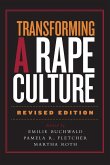Violence and increasing public awareness of violence mark our contemporary condition. September 11, 2001 made this condition even more indelible. Cultural Shaping of Violence proposes that violence cannot be described, let alone understood or addressed, unless tied to the cultural settings that influence it. Its 27 chapters researched and written by 28 scholars of seven nationalities, document violence in 22 distinct cultural setting in 17 nation-states of five continents. Internal to each society, a number of sites of violence may thrive, from the domestic sphere to social institutions and political arenas. In whatever site or guise, violence reverberates throughout the social fabric and beyond. Myrdene Anderson is an associate professor at Purdue University. She is an anthropologist, linguist and semiotician. For a citizen-scientist immersed in many cultural works, Anderson considers violence an imperative intellectual and pragmatic issue. However, this book was a collaborative issue. A majority of the authors are anthropologists.
Bitte wählen Sie Ihr Anliegen aus.
Rechnungen
Retourenschein anfordern
Bestellstatus
Storno








